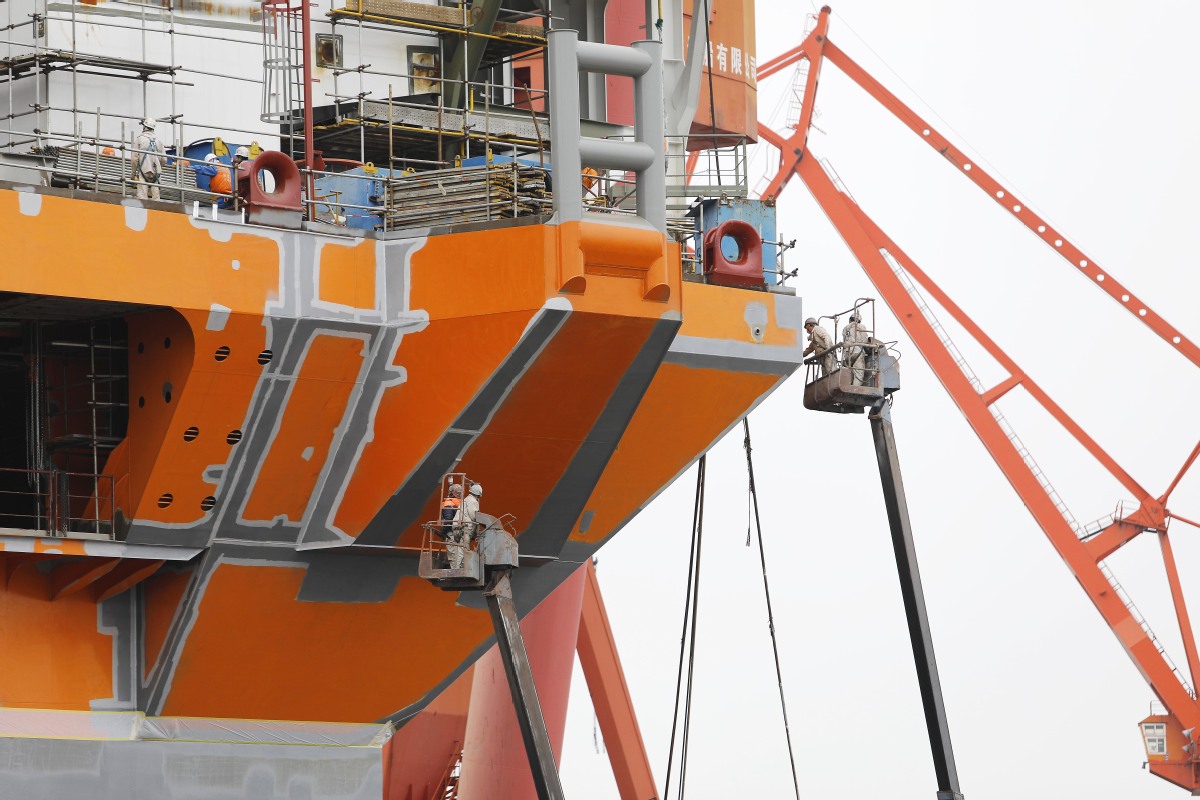Sea dragons reshape marine economy


To exploit opportunities presented by this trend, the merged entity of CSSC started to build the nation's largest and most advanced research vessel in late October at its Jiangnan Shipyard Group in Shanghai. The vessel is expected to be ready in two years.
Hu Keyi, head of the shipyard's science and technology committee, said the ship will have a displacement of 6,800 metric tons, making it the largest research vessel in China and surpassing the 5,000-ton Dongfanghong 3, which was also built by the shipyard and is operated by the Ocean University of China in Qingdao of East China's Shandong province.
Upon its completion, the ship will be delivered to Sun Yat-sen University in Guangzhou, the capital of South China's Guangdong province, and will be used to carry out scientific expeditions and student training. It will carry modern scientific devices and high-performance servers, and will be tasked with conducting surveys on water, atmosphere, ecological systems and resources.
With podded propulsion units as its driving force, the vessel will boast better mobility than existing research ships in China, he said.
The merged entity of CSSC also delivered the Hailong, or the Sea Dragon, the most advanced diving support vessel China has ever built, to Jumeirah Offshore, a Singapore-based marine engineering firm, in December.
The vessel is capable of supporting a total of 24 divers conducting operations 300 meters under the water. It can carry two remotely operated underwater vehicles capable of diving to a depth of 3,000 meters, according to a statement released by the company.
"About 85 percent of ship parts and equipment such as diesel engines and marine propellers today can be purchased from domestic manufacturers," said Yang Zhizhong, president of Dalian Shipbuilding Industry Co Ltd, a subsidiary of CSSC.
He said CSSC will gather more resources to compete with South Korea and Japan in the field of building LNG carriers, pushed by China's cross-border reform in the natural gas sector, including market-oriented reform, transparency and improved infrastructure.
According to global independent maritime research consultancy Drewry, China will import between 60 million tons and 100 million tons of LNG annually by 2022 from countries such as Qatar, Malaysia and Russia, which means that the market will need around 60 to 100 LNG carriers by that time.
"Many economies participating in the BRI are seeking to develop trade, regional connectivity, offshore energy, tourism and other service businesses via the 21st Century Maritime Silk Road," said Yang. "Additional demand for ships is also coming from China's surging resource deployment into high-end and green shipbuilding."
In addition to building more high-end ships to ensure the country's energy security and meet the diversified demand of foreign shipowners, CSSC's shipyard in Guangdong province is building the nation's first maritime patrol ship with a tonnage exceeding 10,000 tons. The vessel will be operated by the Guangdong Maritime Safety Administration when commissioned.
Designed by the erstwhile CSSC (not the merged entity), the ship, with a length of 165 meters and a tonnage of 10,700 tons, will be China's largest and best-equipped maritime patrol vessel. It can carry multiple types of helicopters and is able to carry out cross-zone patrols as well as search-and-rescue missions under rough sea conditions.
As China's flagship for patrol, and search-and-rescue missions on the high seas, the vessel will greatly promote maritime safety in the Guangdong-Hong Kong-Macao Greater Bay Area, according to the company.
The international trade arms of CSSC also announced they had signed contracts for building two 13,800-ton stainless steel chemical tankers and two 158,000-ton crude oil tankers, as well as for constructing two 79,900 cubic meters LNG carriers earlier this year.
Since SOE mergers in many industries, including shipbuilding and equipment manufacturing, have proven to be effective, China will accelerate the pace of integration in the areas of equipment manufacturing, chemicals, maritime engineering, and overseas oil and gas assets this year, said Peng Huagang, secretary-general of the SASAC.
To improve the efficiency of State capital, China has reorganized 41 central SOEs since 2012, including the merger of China North Railway and China South Railway, and the structural reorganization of China Poly Group Corp and China Silk Corp.




































